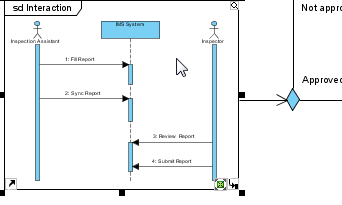

Also, an activity diagram can describe simultaneous activities, decision points, and subsequent behavior based on the decision's result.

ActivityĪn activity diagram describes the flow of actions in a system or subsystem. The following sections describe the details of each type of dynamic diagram.

UML specifies seven types of dynamic diagrams: A static diagram, on the other hand, describes the characteristics of a system or part of a system. A dynamic diagram describes the operations, actions, and changes that occur in a system over time. Types of dynamic diagramsĭynamic UML diagrams describe the behavior of systems. That application is a system that delivers an educational video to a user according to a selection made from a catalog of videos available for viewing. In this article, I go into the details of dynamic diagrams, and in another article, I explain static diagrams.Įach example diagram for this article represents a particular aspect of a hypothetical application called the Instructional Video Service. My introductory article answers essential questions like: What is UML? Why was UML created? Who created UML? and Why should you use UML? There are two basic types of UML diagrams: static and dynamic. Streamlining DevOps in hybrid, multi-cloud, on-premises, and edge environments.However on other hand Collaboration diagrams is used to describe the general organization of system for several objects in several use cases. Sequence diagram as already mentioned is used to describe the behaviour of several objects in a particular single use case with implementation of all possible logical conditions and flows. On other hand Collaboration diagram mainly represent organization of system so it is not classified as Dynamic modelling diagram. On other hand Collaboration diagram focus to represent the structural organization of the system and the messages that are sent and received.Īs Sequence diagram models the sequential logic, ordering of messages with respect to time so it is categorised as Dynamic modelling diagram.

It is time ordered that means exact interactions between objects is represented step by step. Sequence diagram mainly focuses to represent interaction between different objects by pictorial representation of the message flow from one object to another object. On other hand, Collaboration diagram is a diagram in which main representation is of how one object is connected to another implementing the logic behind these objects with the use of conditional structures, loops, concurrency, etc. Sequence diagram is the diagram in which main representation is of the sequence of messages flowing from one object to another also main emphasis is on representing that how the messages/events are exchanged between objects and in what time-order. Both Sequence and Collaboration Diagram are the type of Unified Modelling Language (UML) which is nothing but the pictorial representation of any behavioural flow but on the basis of what each of them emphasis we can distinguish between them.įollowing are the important differences between Sequence Diagram and Collaboration Diagram − Sr.


 0 kommentar(er)
0 kommentar(er)
